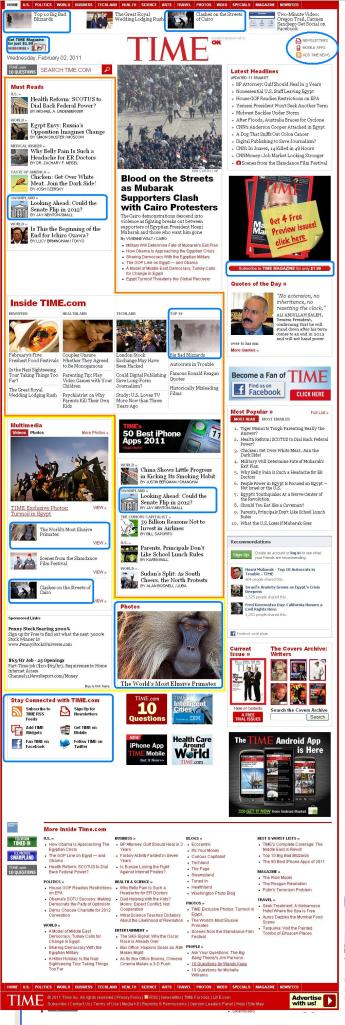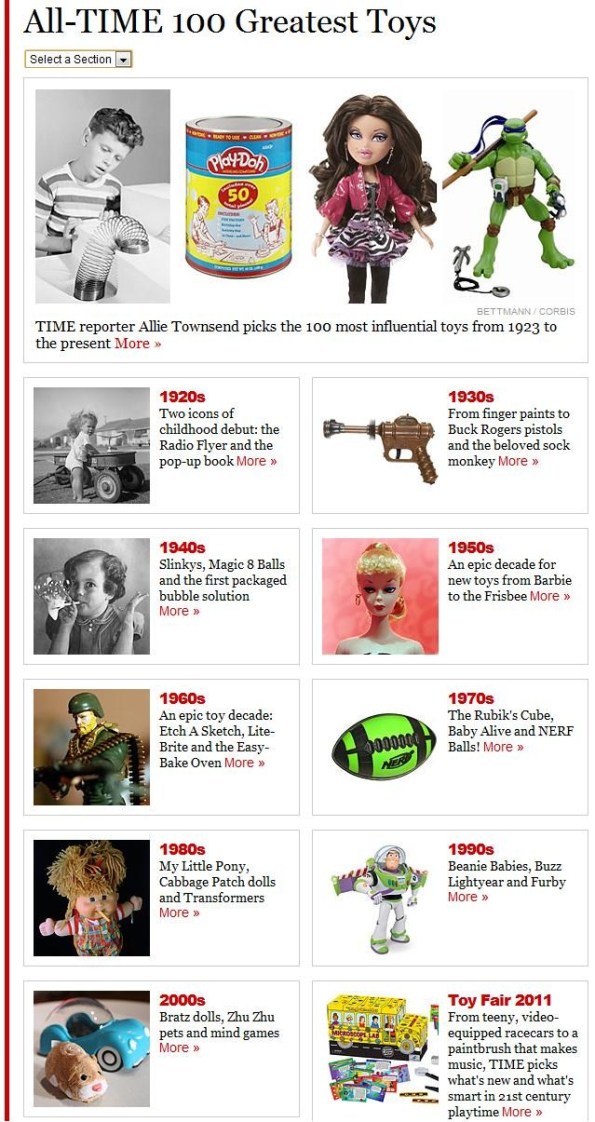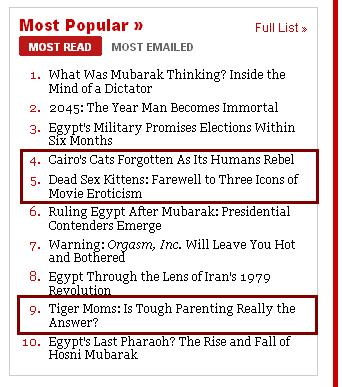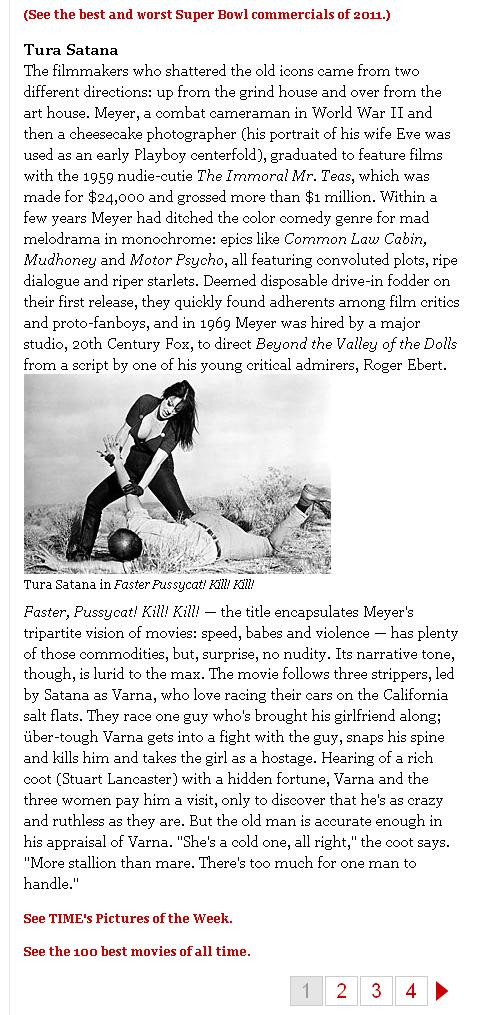Archive
Living large in the dataverse
Techland recently ran a blog post stating that 9,570,000,000,000,000,000,000 bytes (9.57 zettabytes) of data are consumed every year. This is potentially meant to be really impressive, but since the human brain can’t comprehend numbers of that magnitude, it just goes right over my head. This is not a personal affliction – just a few lines down, Techland acknowledges that people can’t wrap their heads over such a number.
They try to make this more understandable by saying that in book form, “our planet’s annual data consumption would be a stack of books 5.6 billion miles high – enough to stretch all the way to Neptune, and back again. Twenty times.” Unfortunately, this does very little to solve the problem since 5.6 billion is still an incomprehensible number. This would have been a lot better illustrated through some nifty data visualization graphic.
There’s a lot of room for creativity here. It would be pretty cool if they kept to the solar system metaphor and visualized the number of bytes consumed as a planet, and then surrounded by other data planets, such as that data in book form, or other large numbers. Definitely a missed opportunity.
The other major pitfall of this post is it’s lack of relevance. Techland goes on to say that most of this is transient data – computed and quickly deleted while calculating something else, never actually seen by people. I can’t see the point of publicizing a figure too large to comprehend, especially when it relates to something too transient to affect us, unless someone was dying to use the word “zettabyte” in a post. (Admittedly nifty, but save it for trivia night, guys.)
As an afterthought, Techland wonders how much of this data is social networking updates, or in other words, how to convert all this data crunching into something people might actually be interested in. Well, it would probably look a lot like the epic map XKCD put together in 2010, which attempted to represent social activity in online community as a map of the world. Besides being totally mind-blowingly fascinating, it was also really well researched, and completely relevant.
So while the Techland numbers fly over my head without so much as a noteworthy whooshing sound, I can marvel at this map for days. In fact, I have long contemplated buying a posterized version of this to complement the map of the United States that my roommate drew on my living room wall. It’s becoming ever more clear that both are equally viable places to roam.
Virtual Illuminations from the Lightbox

Thibault Brunet's virtual war photography (via TIME.com)
I’m not sure whether my oversight or TIME’s unintuitive layout is to blame for the fact that it took me three whole months to find Lightbox. As I noted in the last post, Lightbox, TIME’s equivalent of the NYTimes epic Lens Blog, is a stylistically minimalist, aesthetically pleasing blog devoted to photojournalism. Posts are neatly sorted into categories which include in-progress work from around the world, photo essays, profiles of photographers, and backstories behind intriguing images. TIME’s photo editors curate the blog in a way that keeps it interesting and relevant, without any of the infotainment fluff that clutters up the main site. As an added bonus, the photo viewing application loads quickly and is possible to scroll through without leaving the page, which are both nuisances in TIME’s primary photo app.
I’ve been keeping an eye on this blog since finding Nachtwey’s Japan photos on it last week. This week, “First Person Shooter In the Virtual World: The Work of Thibault Brunet” caught my attention, as it appeals to both my photo nerd and tech nerd sensibilities. The idea of people living their lives in the virtual world has intrigued me from the kids in high school who refused to go out because they had raids scheduled on World of Warcraft to intellectuals scheduling talks in Second Life as part of book tours. Brunet has done his part to dance the line between virtual reality and “real” reality by making a photography career exclusively out of screenshots he has taken from first-person video games.

For me, this is incredibly interesting, as it calls into question exactly what a photographer is. All Brunet has done, in effect, is freeze action by pausing graphics created by someone else. However, isn’t that what any photographer really does? Brunet did not code the landscape he freezes, but then, Cartier-Bresson did not create the people in his street scenes. The primary difference is that there is no technical prowess involved – a screenshot will always just be the push of a single button, thus reducing the role of photographer to decisions about composition. Then again, the same can be said about the Auto function on point-and-shoots released for mass consumption. Whatever your take on this is, Brunet’s images are aesthetically interesting, evocative, and thought-provoking, which I’d say makes them art. Not sure if this means video game photography is on its way to becoming a viable profession, but Neal Stephenson would sure be proud.
TIME’s Coverage of Earthquake and Tsunami in Japan

An emergency worker cycles past debris in Yamada, Iwate Prefecture, March 17, 2011.Photo from Time.com, taken by Aly Song for Reuters
When something like the earthquake in Japan happens, publications with sufficient resources really go all out to give the story the coverage it deserves. TIME was no different. TIME treated the story as a special package, adding all coverage into a comprehensive and easy-to-navigate page.
Media outlets prominently featuring photos of disasters are sometimes accused of preying to people’s rubbernecking impulses, Photos of the devastation, but I don’t think that’s fair. A catastrophe of this scope needs to be shown through images, to fully impart the scale of the disaster, show the human impact, and encourage people to help. This same tactic has led to the rise of charitable NGOs staffing photographers. TIME’s photographers have sought to depict the destruction with dignity. My favorite album by far is a somber collection of haunted wide-angle shots by the inimitable James Nachtwey. Other albums show the inside of the Fukushima plant, and general scenes from the aftermath.
In addition to photos, TIME includes videos, time-sorted headlines, feature articles, Q&As, and ways to provide aid. The only thing conspicuously missing is interactive graphics. When the earthquake first hit, the depiction that stunned me most was a series of interactive satellite photos from the New York Times, in which you could move the cursor from left to right to compare before and after scenes. It’s an interesting comparison because although ground photos are supposed to have the greatest emotional effect, by putting viewers in the middle of an event and giving them a human perspective, these distant aerial shots felt a lot more visceral. Something about obliterating a landscape with a sweep of your cursor just feels like a punch in the gut.
Judging a region by its cover?
It’s become a global stereotype that Americans are more interested in personal affairs than in what’s going on in the rest of the world. When this comes up in a conversation with someone from another country, I get defensive – I feel compelled to mention that International Relations is one of the biggest departments at BU or that nearly everyone I know went abroad for a semester to try to broaden their horizons. And then a week like this comes around, and a B-list celebrity’s tantrums push political upheaval out of the public eye. (Seriously, 100,000 people watched Charlie Sheen’s webcast? I really hope this turns out to be another Casey Afflek production.)
But maybe it’s not that Americans are less intrinsically interested in global issues and more that mass media outlets are dumbing down their content. The above comparison of covers from TIME US, TIME Europe, TIME South Pacific, and TIME Asia makes this painfully obvious – all international TIME covers feature a menacing photo of Gaddafi, while the US cover has a faceless man hugging himself and the headline “Understanding Pain.” I don’t mean to undervalue scientific issues, but I am confused as to why this is assumed to be more newsworthy in the US than bloody civil wars (not to mention domestic issues).
 I wonder if this is an accurate representation of what people are interested in. A look at the “Most Emailed” list isn’t completely reassuring, especially since #5 is “Is BYU’s Premarital Sex Controversy Good for College Sports,” but it has potential. Turkey arresting journalists comes in at #4 and “Egypt and Tunisia’s Unfinished Revolutions” is at #7. (Incidentally, the pain headline barely makes the cut at #10.) It is likely that people who prioritize politics don’t go to TIME for their news source, but I wonder if TIME isn’t doing their American audience a disservice by providing them with different leading content.
I wonder if this is an accurate representation of what people are interested in. A look at the “Most Emailed” list isn’t completely reassuring, especially since #5 is “Is BYU’s Premarital Sex Controversy Good for College Sports,” but it has potential. Turkey arresting journalists comes in at #4 and “Egypt and Tunisia’s Unfinished Revolutions” is at #7. (Incidentally, the pain headline barely makes the cut at #10.) It is likely that people who prioritize politics don’t go to TIME for their news source, but I wonder if TIME isn’t doing their American audience a disservice by providing them with different leading content.
Egyptian youth given a voice in TIME Video multimedia piece
The cover of TIME this week featured seven young Egyptians who were involved in the revolution. TIME Video ran a multimedia feature to complement the cover story, which I thought was rather well done. The video is well-filmed, juxtaposing sequences of the Egyptians speaking with photos of them protesting and photos of Egypt during the revolution. But what really stood out to me was the way the feature portrayed Egyptians.
In our last online journalism class we spoke about stereotypes and how damaging it is for the media to perpetuate them. Additionally, I am taking a class about women in the Middle East, which focuses heavily on how Middle Eastern women are stereotyped in Western media. We established that the West tends to imagine Middle Eastern women as oppressed, acquiescent, and hidden. They are portrayed as objects to be “saved,” or politicized to make a point against Islam. Although steps are being taken to change this, we noticed that photographs from the front lines of the revolutions tend to show mostly men.
In this case, TIME did a great job of avoiding these stereotypes. Three out of the seven youths on the cover are women. They are varied in appearance – one wears a hijab (headscarf), one wears a keffiyeh (scarf/headdress) around her neck, and one is dressed without any cultural signifiers. Regardless of what they are wearing, all the women display equal agency and are outspoken about their desire for freedom and their vision for the state.
Some are speaking English, some speak Arabic and are translated, but all the Egyptians in the video speak passionately and confidently about the revolution. The great thing about TIME’s approach in this video is that it gives the Egyptians a direct voice and lets them express their perspectives without interference. “There was always this thing about how Egyptians are passive, but I think everyone proved that no, we want freedom,” says Sarah Abdelrahman. This is an amazing leap forward from dated (and often hypocritical) rhetoric that it is America’s job to step in and fight for democracy and defend freedom. By giving the Egyptian youth a direct platform to speak, TIME supports the underlying point of the revolution – direct democracy, called for by the people, built from the ground up.
Joy buzzers, Beanie Babies, NERF balls, oh my!
TIME recently put up a feature regarding the All-TIME 100 Greatest Toys (pun intended). The feature gave an extensive rundown of beloved toys, broken up by decade. Each toy gets its own page, a graphic, and an explanation of the toy’s function, history, and role in the context of its time. People can also leave comments on each toy. Looks like they’ve been taking pointers from their friends over at Techland!
Despite my usual skepticism at TIME’s features, this one is actually rather well carried out. Each blurb is short enough to keep people clicking but well researched enough to engage nerdier readers. (For example, I learned that Star Trek Electronic Phasers enabled kids to shoot their friends with faux-futuristic gadgets way before laser tag came around!) Lists are a good way to keep people on your site for a prolonged period of time. As a bonus, there’s nothing like extensive rundowns of toys, nostalgia and reminiscing to make people all warm and fuzzy inside.
All these things turn out to make a winning combination – at the time of this post, 13,150 people “liked” this on Facebook.
A quick follow-up
Just caught how the New York Times’ covered the deaths of Maria Shneider and Lena Nyman. Not surprisingly, their approach is far superior to Time’s. Both women get thorough obituaries which flesh out (no pun intended) their lives and offer their perspectives on the erotica films that made them famous.
Shneider is quoted as saying, “I felt humiliated, and to be honest I felt a little raped, both by Marlon and by Bertolucci. After the scene, Marlon didn’t console me or apologize. Thankfully, there was just one take.”
Nyman‘s thoughts, on the other hand, are more accepting. “You know,” she said, “some people get shocked about sex. I was shocked that everyone was so shocked. It was such a quarrel about that movie. Wow!”
This could be due to the different attitudes of the people making the movies, or perhaps the women’s different dispositions. Regardless, the Times recognizes the importance of giving the women a voice.
Finally, there’s a great critical op-ed piece by Manohla Dargis which contextualizes Last Tango in Paris and I Am Curious within their time and relates them to the contemporary portrayal of sex and romance in American cinema. This is a bit of a stretch to tie in because neither of the aforementioned movies were American, but it’s a great point nonetheless.
So much better.
Techland does something right
Caturday must’ve been in full force this weekend, because Time’s Most Popular list has not one but three titles with a feline focus. Awestruck by the idea that several people at Time decided that “Dead Sex Kittens” was an appropriate title for a triple obituary (or really anything besides the most sordid of snuff films), I fled to Techland for refuge.
Techies, not surprisingly, can be relied upon to use the internet correctly. Thanks to this truism, Techland is the only part of Time.com that’s attractively put together and user friendly. This has been accomplished by doing away with all of Time’s aesthetic decisions except the navigation bar at the top and replacing it with a pleasing blue-black color scheme, sans serif font, wider spread, organized headlines, eye-catching top content, and constantly updating news feeds and Twitter feeds.
As an added bonus, the content on Techland is well-reported and covers things that people interested in technology might reasonably be expected to care about, whether it’s new gadgets, tech culture, or viral videos.
In the spirit of competition, I thought I’d take a look at a feature listing the Top 10 Consumer Tech Rivalries and compare it with the grindhouse trainwreck that is the aforementioned Dead Sex Kittens post on Time’s main site.
The Techland feature cycles through ten tech rivalries, from the beloved old school duel of Nintendo vs Sega to the useful Internet Explorer vs Firefox vs Chrome vs Safari to the contentious PC vs Mac.
- Each rivalry is featured on its own page
- Each page features a snarky recap of the rivalry, and though it doesn’t stipulate who won, an intuitively Comments box could invite users to debate this themselves.
- Each page opens with a relevant YouTube video which is streamable without navigating away
- Techland has figured out hyperlinks.
The Time.com main content feature discusses three recently deceased movie stars (Maria Schneider, Lena Nyman, and Tura Satana), the movies they starred in, and their significance within the context of their time and erotic cinema as a whole.
- The article focuses primarily on each actress’s most well-known film, their directors, and their famously lurid content. There is little analysis or information about the women’s lives outside of the films and a brief nod to Schneider’s feelings of being exploited is the only time the article attempts to look at things from the perspective of the actresses themselves. This would be fine except that the headline implies that the focus is on the women themselves. Objectifying women posthumously should be offensive enough, but in accordance with the rest of Time.com, the article is also poorly presented.
- The feature consists of an introduction and three sections and is spread over four pages. However, instead of breaking these up accordingly (like the Techland feature), the content runs together and is broken up haphazardly.
- Only two of the women featured get photos within their sections. (Shneider’s is at the top, which apparently means she does not get one when her name is actually mentioned.) Within the first two sections, the photos are found one paragraph down and are awkwardly sized, not covering the full width of the column.
- Instead of hyperlinks worked into the text there are awkwardly placed links to content which could be relevant (but is actually just distracting).
Final verdict’s apparent faster than you can say “revenge of the nerds:” Techland > Time.com main content, Doug Aamoth > Richard Corliss, live cute kittens > dead sex kittens, and Sega Genesis > NES. No contest.
A post-initial note on layout
All week long I’ve basically just been glued to Egypt coverage around the web, and Time’s approach to that hasn’t changed since the last post. Unfortunately, tearing myself away from Tahrir Square in search of other news to analyze means first contending with the organizational disaster that is Time’s layout, so I figured I’d touch on that instead. Magazine people know that layout is extremely important. For web publications, this is just as true if not more so – websites offer a lot more design choices than the physical structure of a printed magazine, and if a site is clunky and difficult to navigate, odds are people won’t bother with it for very long. Time.com utilizes a lot of the features news sites have grown to take advantage of.
- Interactive options – such as RSS subscription, mobile apps, Twitter feed, Facebook fan page
- A widgets that shows users what their Facebook friends are recommending
- Multimedia and photo stories (although the photos are in the clunky applet I mentioned in the last post)
- Additional content sorted by Must Reads, Latest Headlines, Most Read, Most Emailed, Inside Time.com, and…More Inside Time.com
- A variety of well-written and more or less well-formatted Blogs such as “Healthland,” “Techland,” and “Swampland” are thrown in among the regular columns.
- The “Quotes of the Day” section is a nice touch, and appears to be a unique feature
All this shows that Time has a handle on what online audiences are looking for. That’s the good news. The bad news is that many of the features on the home page are repetitive, poorly placed, or downright baffling. After staring at the home page for long enough, it begins to uncannily resemble a botched game of Tetris.

Glaring layout issues, color-coded by severity according to the NSA Threat Level color scheme. (Red is omitted because it's Time's main layout color.)
Let’s review:
- Orange Alert: What are these Must Reads and who decides them? They’re not Latest Headlines or Most Popular so they must be chosen by the editors. In that case, how are they at all different from the headlines found at the top of the page, or within Inside Time.com? And why do they continue down into a lost-looking middle column? (The Tetris analogy is really the only possible explanation.)
- Yellow Alert: Multimedia and Photos are buried halfway down the page, at the far left. Furthermore, a single photo story seems to have detached from the pack and found it’s way down below the blog stragglers, where it could easily be mistaken for an ad. The two ought to be combined and made bigger and more eye-grabbing.
- Blue Alert: Unnecessary repetition. Changes in the Senate, Cairo, blizzards, and elusive primates are surely all very newsworthy, but that should be emphasized by placing them near the head of the Must Reads, not repeating them throughout the home page.
- Purple Alert (Purple is not an actual color used by the National Threat Advisory): There are multiple headlines from the same area of interest thrown around the page. These could be better organized.
News is overwhelming, the Internet is overwhelming, there’s too much information to consume and more information is happening with every moment. This is a fact of online life and it can be alternately nauseating and exhilarating. But when I feel like down my already-fragile attention span with a seemingly random cavalcade of disorganized information, I just go on Twitter – at least it’s aesthetically pleasing. Publications, even on the web, are supposed to make all this information feel manageable, usually through layout decisions that give the illusion of organization. So although it’s taken some important steps, Time still has serious housekeeping to do.
Coverage of turmoil in Egypt
The protests in Egypt have been making front page headlines all week – thousands of people are in the streets rioting to overthrow Mubarak’s authoritarian regime, which has been in power for over 30 years and has been consistently backed by the U.S. as one of the only stable pro-US strongholds in the Middle East. The internet has been shut down, escaped prisoners and looters are taking advantage of the chaos, the army is supporting protesters, and Mubarak has announced that he refuses to step down.
The situation is complex, rapidly unfolding, and bears far-reaching implications, which means that online journalism can really use its full potential to provide coverage. Huffington Post is on top of its game with this.
A high-impact photo slideshow gives readers an immediate idea of the situation on the ground. Multiple headlines and a live Twitter feed gives updates as they roll in, which is the biggest advantage of online journalism has over print. The articles themselves break up blocks of text with graphic videos and links to relevant articles for context. The HuffPost front page tends towards being overly sensationalist, but in this case, that’s appropriate.
Time, on the other hand, could be doing a much better job.
Their content is good, especially since they’re reporting about broader implications for Israel, Tehran and the US. However, presentation is lacking. Hyperlinks within articles aren’t in the text but rather awkwardly placed between paragraphs. There is no source for live updates. Different articles are poorly connected, making coverage seem fragmented and hard to follow.
Most importantly, the potential for graphics and multimedia is seriously underutilized. The front page and each individual article has only one (rather small) photo, which fails to pull readers in and give them a visceral understanding of the unfolding chaos. This is a revolution, not a press conference. To their credit, Time does give a link to a great photo slideshow. but the slideshow application loads each photo on a separate page, which is awkward and slow to load.















